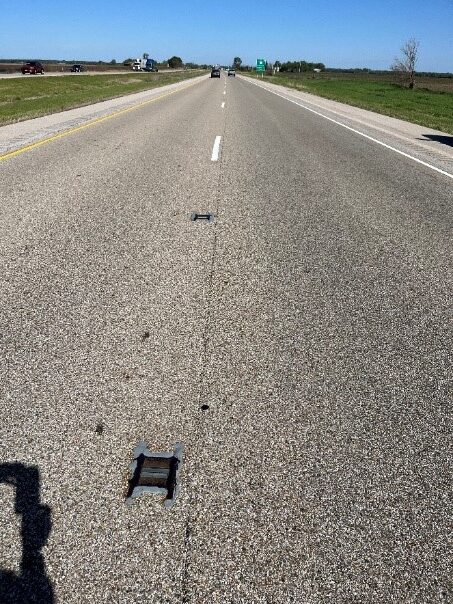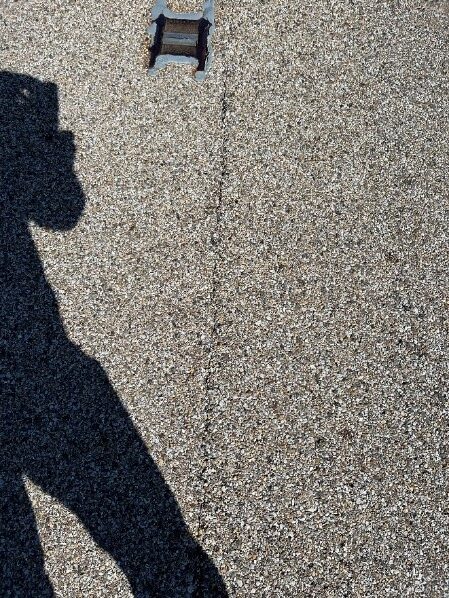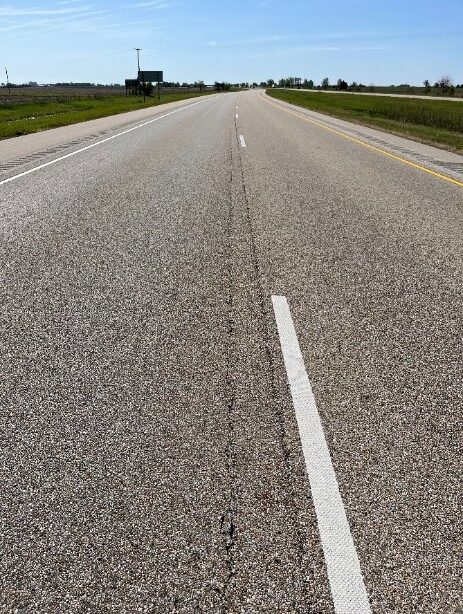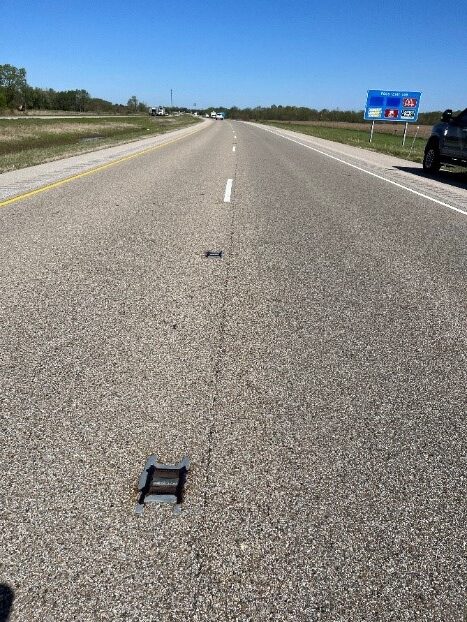Written by Naarah Holloway
The Purpose of VRAM
The longitudinal joints in pavements are the weakest point because they are most vulnerable to elements including air and water. These elements enter the longitudinal joint’s voids and cause deterioration, cracking, and potholes. As deterioration begins at the centerline, deterioration of the rest of the road will eventually follow.
When a Void Reducing Asphalt Membrane (VRAM) is applied before the hot mix asphalt (HMA) application, voids along the longitudinal joint will be filled. Doing this allows the joint to become less permeable to the elements and leads to stronger, safer, and more sustainable roads. Using VRAM helps reduce the need for ongoing road maintenance and repairs.
Reviewing the Long-term Benefits of VRAM Projects
Monitoring the impact of VRAM on projects over time is important. When and where possible, our team works with local and state DOTs to review projects. Shown below is an annual review of 4.5 miles of the east and westbound lanes of I-74 in McLean County, Illinois
2023 Project Review
- Owner: IDOT
- Applicator: Illiana Construction Co.
- Prime Paving Contractor: United Contractors Midwest’s (UCM) Rowe Construction
- Location: I-74 (MP 150.5-155)
- State: Illinois
- County: McLean County
- Date Constructed: Summer 2017
- Date Reviewed: 5-10-2023
- Weather Conditions on the Day of Review: 65°F and sunny
2023 Project Observation
The Asphalt Material’s Field Support Manager Jim Cunningham and Illiana’s LJS/ VRAM Superintendent Cullen Hesterberg reviewed this project. Detailed below are observations and images from this year’s review that show how well the VRAM has performed after six winters.
Due to the VRAM application, the longitudinal joint has seen very little deterioration since it was constructed in the summer of 2017. This two-lane road had reflective pavement markers (RPMs) along the centerline of both sides of the highway. Although the longitudinal joint shows a slight opening no larger than ¼” between the two lanes, the VRAM is still protecting the longitudinal joint from the infiltration of air and water. The images below show how well VRAM is continuing to protect the longitudinal joint despite the joint opening.




Conclusion
The review found that the portion of the project protected by VRAM is in good condition, even after a ¼- ⅜ ” wide joint opening was observed at the centerline, but it was only The centerline is the most important and expensive section of the road. Agencies often make investments at the centerline of the road, including stripping, reflective pavement markers (RPMs), and rumble strips. The cost to repair these different treatments when the underlying pavement deteriorates becomes significant.
Utilizing a VRAM, such as J-Band® protects the most important and expensive 18” of your roadways: the centerline. J-Band® is applied before paving under the eventual location of the longitudinal joint. This allows the VRAM to migrate upwards after a hot mix is applied, filling voids from the bottom up, which reduces permeability. J-Band® is a Void Reducing Asphalt Membrane (VRAM) with a record of accomplishment of over 20 years of reducing air voids and connected voids in longitudinal joints.
You can explore our interactive map to see more projects that have utilized VRAM at the time of construction and learn more about how longer-lasting roads save money, time, lives here.
Our Story
At Asphalt Materials, we understand that longitudinal joint deterioration has long been a problem for engineers, applicators, and the communities we live in. VRAM was developed to help create longer-lasting, safer roads through a collaboration between state transportation agencies, industry experts, and the laboratories at Heritage Research Group.
Unlike other treatments, VRAM is a materials approach that significantly reduces air voids in longitudinal joints. J-Band® is Asphalt Materials’ VRAM product. J-Band as a materials approach is applied prior to paving under the longitudinal joint’s eventual location. As the hot mix asphalt (HMA) is installed on top of J-Band, it migrates upward, fills voids, and reduces permeability. Since 2002, this approach has improved the performance of centerline joints and entire pavements in more than 23 states and District of Columbia (DC).
J-Band® is a product of Asphalt Materials, Inc. and was created in the labs of Heritage Research Group. To learn more about J-Band, or to connect with our team, you can email us at: Marketing@Asphalt-Materials.com.
Editor’s Notes:
J-Band®, CCAP® and T-Bond® are registered trademarks of Asphalt Materials, Inc. AMIBIND™, AMIBOND™, AMICYCLE™, AMIGUARD™ and AMISEAL™ are trademarks of Asphalt Materials, Inc.
J-Band® was created in the labs of the Heritage Research Group (HRG) and is a product of Asphalt Materials, Inc. (AMI). To learn more about J-Band, visit www.thejointsolution.com
